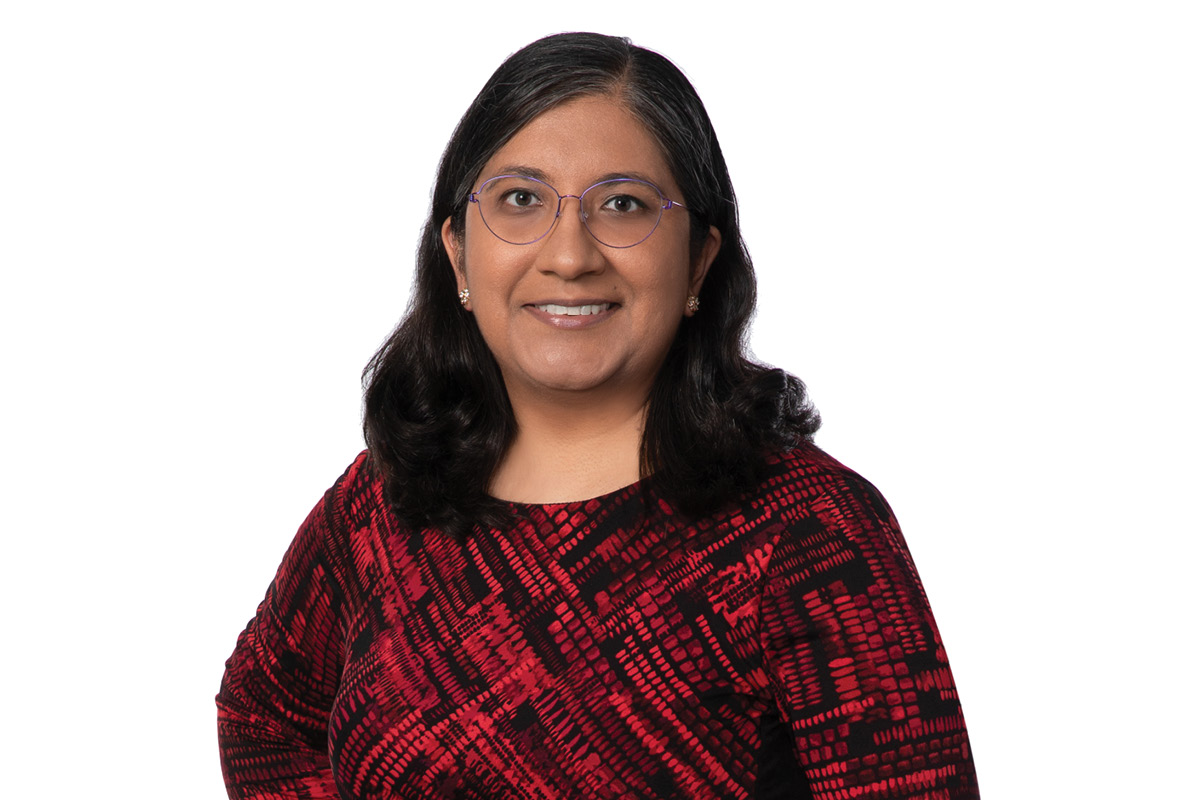Using AI to get a jump on outbreaks

Reading Medical Mysteries: Six Deadly Cases by Dian Dincin Buchman in the seventh grade clinched it. Nita Madhav knew she wanted to be an epidemiologist.
“The book was written like a detective novel [detailing] outbreaks that were happening based on real stories about epidemiologists who figured out how different outbreaks started, how they were spreading, and how to prevent and contain them,” Madhav says.
She stayed true to her ambition, studying ecology and evolutionary biology at Yale University and earning an MSPH in epidemiology at Rollins. Today, Madhav is CEO and president of San Francisco-based Metabiota, a firm specializing in epidemic threat management. Just the place for an epidemiologist.
“At Metabiota, we provide governments and businesses with the data, analytic tools, and expertise they need to better prepare for and respond to epidemics and pandemics,” says Madhav.
Which is just what it has been doing since before the COVID-19 pandemic officially began. “We have an artificial intelligence (AI) powered event-detection system that combines human and machine intelligence,” she says. In late December 2019, that system flagged an outbreak in China as a potential event of concern. Madhav and her team started tracking the outbreak and structuring infectious disease data immediately.
“We started providing risk reports to anyone who was listening on the potential trajectory of the outbreak and potential impacts,” Madhav says. “We’ve been tracking it since for our various customers and have provided the data with scenario modeling and forecasting. We’ve also provided this data for some public use to try to understand the potential of what could happen.”
One of Metabiota’s government customers, for example, used the COVID-19 tracking and forecasting data to assess risks to their personnel in locations worldwide and make decisions about how to change their travel patterns to reduce their exposure. This helped keep their workers safer in the face of the growing COVID-19 threat, potentially saving lives.
Metabiota is working on new data examining how vaccine uptake is going in various countries and how
to improve that process.
Metabiota employs models built by its epidemiologists and data scientists that incorporate biological, socioeconomic, political, and environmental data, resulting in a catalog of millions of scenarios for a wide range of emerging diseases. Working with the insurance industry and disaster-risk financing organizations, it offers techniques to quantify epidemic risk and inform mitigation efforts. The company’s scientists continue to conduct basic research into the causes and dynamics of viral diversity, spillover, and disease emergence. The company has also launched a pilot program for its AI-powered “early-warning” system
to detect other infectious disease threats that could cause public health or economic concern building off the analysis obtained from COVID-19.
Madhav is particularly passionate about the potential of artificial intelligence tools to simulate and measure outcomes that cannot be tested in the real world in real time. “You can simulate scenarios that are not easy to do out in the real world,” she says. “When you have a model built, then you can actually try to understand the larger-scale phenomena.”
Although the world continues to battle COVID-19, Madhav is optimistic about the increase in public interest in infectious disease prevention and student interest in the public health field.
“Once this is over, we definitely don’t want to lose that momentum and passion that is causing more people to be interested in public health and infectious disease epidemiology,” Madhav says. “I hope that we can harness that and make some good strides in how we can handle these events in the future. To public health students, my biggest advice is to be open-minded and really try to work hard at breaking down the silos that do exist. Look at different perspectives to work across the board with social scientists, economists, and policy workers to come together because epidemics are a societal issue.”



